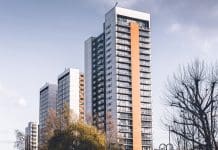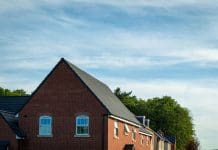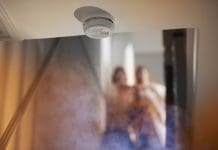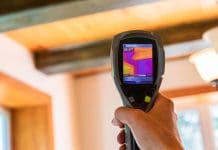The Covid-19 pandemic has changed the hierarchy of importance among building services and facilities management, BSRIA explores the importance of ventilation in infection control within the built environment
While cleaning has been catapulted to the forefront as one of the most important Covid-19 mitigating FM services, ventilation has seen a staggering rise in the hierarchy of importance among building services.
As the evidence on SARS-CoV-2 airborne transmission grows and the general recognition of long-range, aerosol-based transmission has been published, the importance of ventilation in infection control within the built environment has gained prominence.
Covid-19 ventilation guidance
BSRIA emphasised the importance of ventilation from the early days of the pandemic and published related information on the BSRIA Blog in April, accompanied by a webinar, and on our website in June this year.
At the time, research on virus transmission was on-going. On 23 October, two new important pieces of guidance were released. The UK Scientific Advisory Group for Emergencies (SAGE) released the Environmental and Modelling group (EMG) paper on the ‘Role of ventilation in controlling SARS-CoV-2 transmission’. The Chartered Institution of Building Services Engineers (CIBSE) also unveiled version 4 of their ‘COVID-19 guidance on Ventilation’.
These two documents have given us the clearest benchmark so far, relating to ventilation levels recommended to prevent the spread of Covid-19. With both publications, the advice is pragmatic and achievable for most building types and by most building operators. At the highest level, the advice to increase the supply of fresh (outdoor) air and extraction remains the same. Recommendations are also offered on how to achieve this in mechanically ventilated, mixed-mode and naturally ventilated buildings.
It is important to highlight that we have also been given metrics to gauge required levels of fresh or outdoor air; 5 l/s/person has been identified as a poor level of ventilation, and 10 to 15 l/s/person as sufficient. This should be welcome news for anyone looking after a building built since 2006, as Building Regulations guidance in the UK (excluding Scotland) prescribes a minimum of 10 l/s/person of fresh air for the general space in offices. This is also not far off the pre-2006 level (still current in Scotland) of 8 l/s/person. With the greatly reduced headcount in many of our buildings, even older stock should be able to achieve the 10 to 15 l/s/person level.
These numbers are relatively easy to obtain from a comprehensive O&M manual and may be available in a mechanically ventilated building’s building management system (BMS). These metrics are harder to calculate in a naturally ventilated space as they will vary from day to day and season to season, based on things such as atmospheric pressure and resultant wind. For this reason, many building operators will welcome the ability to use another metric to measure.
People breathe out more CO2 than they breathe in, as part of the process of respiration. People are also the main source of the transmission of the Covid-19- virus – as an infected person exhales; the virus is transported out of the body into the air. Good levels of ventilation reduce the potential of the virus to be inhaled by another person as the ambient air is diluted with a non-virus-containing air. Measurement of indoor CO2 levels is therefore a good indication of the effectiveness of ventilation or the dilution of air pollution.
Keeping the level of CO2 below 800 ppm and the exposure time as low as possible is a good way to mitigate risk even in high-risk areas with a higher expectation of aerosol production. Areas where CO2 concentrations regularly exceed 1500 ppm are highlighted as areas which should be given the highest priority for mitigating actions to be applied. This is especially true if the exposure duration exceeds 4 hours.
BSRIA Ventilation Verification Service
To help building services and facilities management teams keep up with the guidance, and provide stakeholders and building occupants reassurance that their indoor environment is monitored to maintain a safe ventilation level, BSRIA has developed the Ventilation Verification Service. The service includes an independent review of the building’s ventilation systems and an independent status report.
















